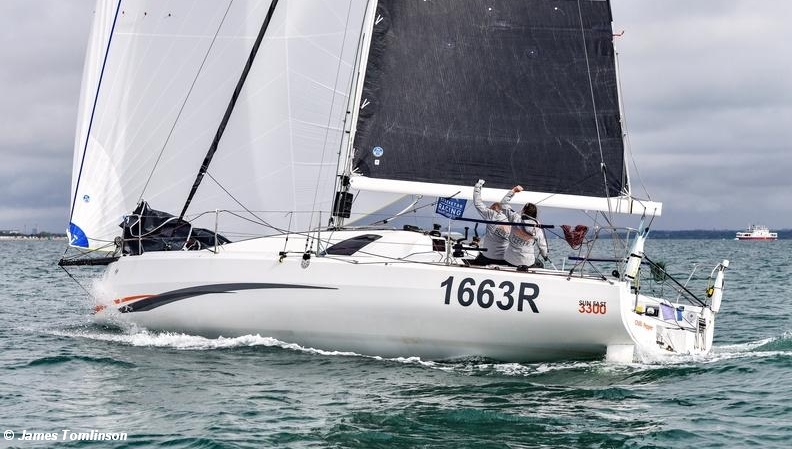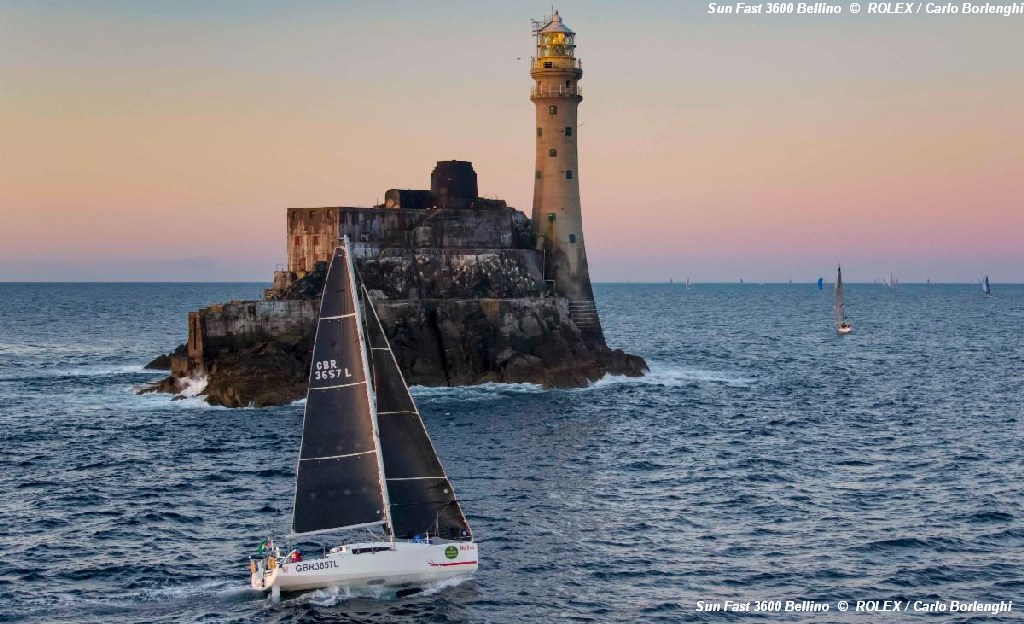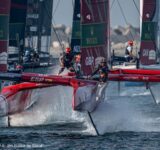Offshore yacht racing’s greatest evolution recently has been the rise of doublehanding.
No better demonstration of this is there than the Royal Ocean Racing Club’s 50th Rolex Fastnet Race, which sets sail from Cowes bound for Cherbourg on 22 July.
Of the present record-sized IRC fleet (currently exceeding 400 entries) more than one quarter will be racing in the IRC Two-Handed class.
And excludes the 22 IMOCAs, also racing doublehanded (albeit with a media crewman too). This has come a long way since the 20 boats that raced in the class when it was introduced in 2005.
Given the numbers racing doublehanded, there is a good chance that this year’s Rolex Fastnet Race might see its second overall winner from the IRC Two-Handed class.

The latest generation are also purpose-designed to race shorthanded under IRC. Thus they have huge form stability culminating in a semi-scow bow and are formidable speed machines, especially off the wind.
Most of the Sun Fasts Nigel de Quervain Colley sells have gone to previous owners of larger boats who are downsizing for cheaper and more manageable racing ie less crew.
“You can race in 30 knots two up and get around the course which is quite remarkable,” says Nigel de Quervain Colley. “They have so much stability, you are always looking for more sail area and like any scow bow, the more symmetric waterline makes it incredibly well balanced. We have found from experience that the more you push the boat, the faster it goes, while staying under control…”

This year the doublehanders are mostly competing in IRC Two or IRC Three, but the longest outside of the IMOCAs is the Verdier-designed JP54 Notre Mediterranée-Ville de Nice raced by Jean-Pierre Dick and Fabien Biron.
Dick is a famous four-time Vendée Globe competitor, having finished just off the podium in both the 2012-13 and 2016-17 races.
However his track-record is second to none racing doublehanded having twice won the Vendée Globe’s doublehanded equivalent, the Barcelona World Race and the doublehanded IMOCA class four times in the Transat Jacques Vabre over 2003-2017.
This year Dick’s principle competitive objective is the 50th Rolex Fastnet Race, aboard his boat which is effectively a scaled-down IMOCA, fitted out with a stylish, but otherwise minimal interior.

The main doublehanded competition in IRC One will be between Beneteau Figaro 2s, while the most intense doublehanded dust-up will be in IRC Two and Three.
Here numbers are so significant that there will be many ‘races-within-a-race’ between various popular models, largely from French manufacturers JPK Composites and Jeanneau.
The doublehanders entered go as small as Martin-Jan Strebe’s Beneteau First 31.7 Bruorskip from the Netherlands and as old as Peter Morton’s 1968 vintage Swan 36 Scherzo of Cowes, being sailed by son-in-law Joph Carter and Robbie Southwell.
So what is the attraction of racing doublehanded?
The sport is far from new and certainly early converts were those desiring the added challenge of doing everything on board themselves.
However its growth has paralleled the evolution of everyday life, with some being lured in after getting increasingly frustrated by the perpetual effort required to maintain regular crew.
James Boyd/RORC . . . Read more here . . .
The 50th edition of the Rolex Fastnet Race starts from Cowes, Isle of Wight on Saturday 22 July 2023.







